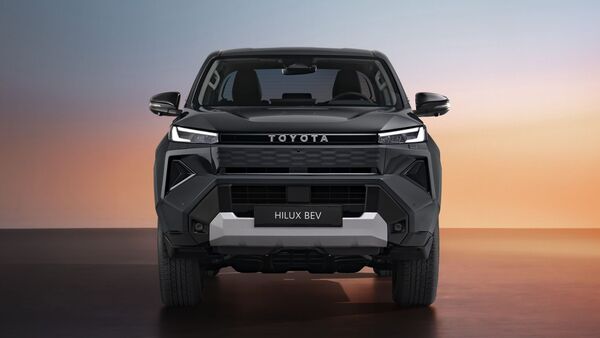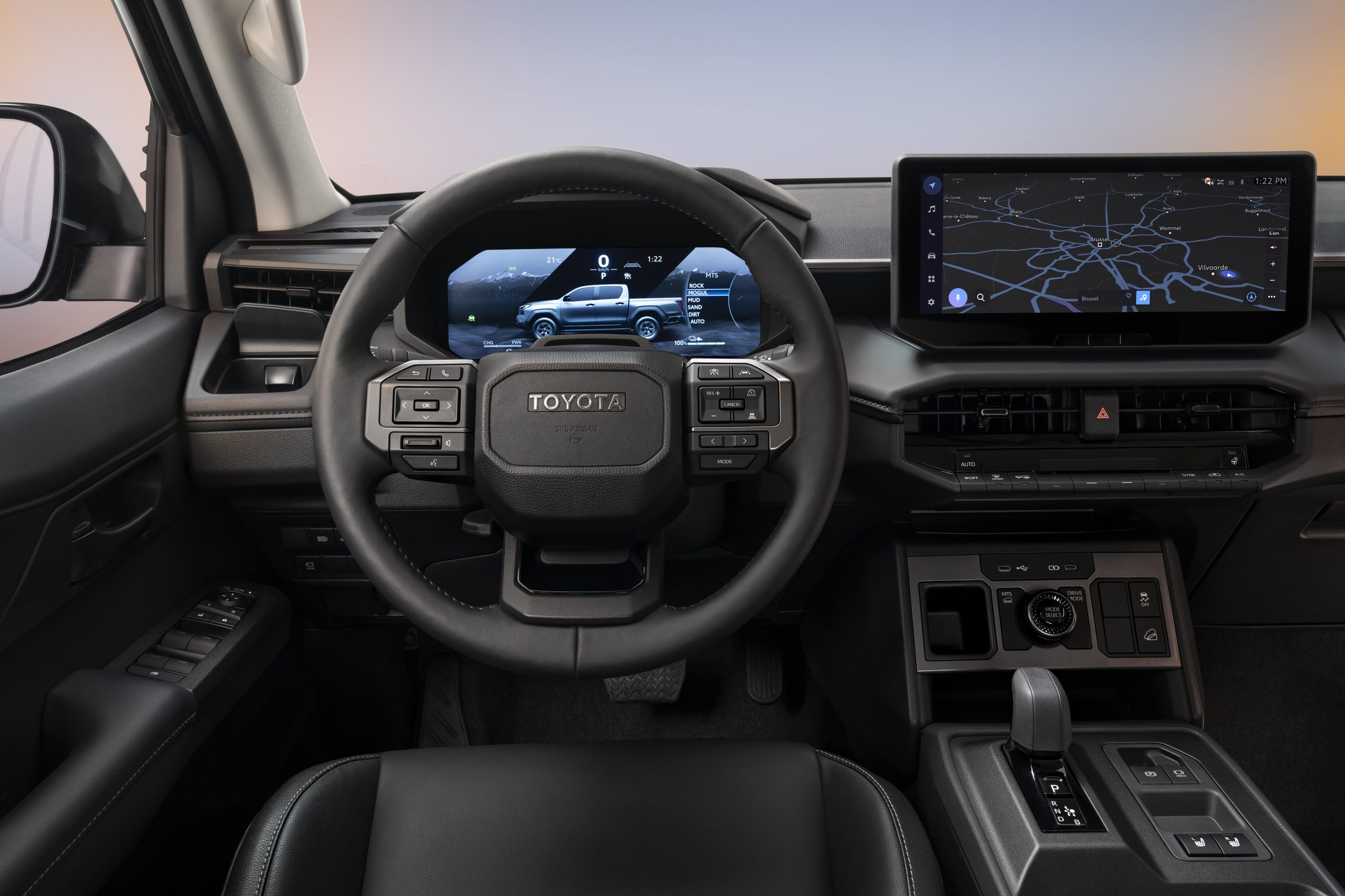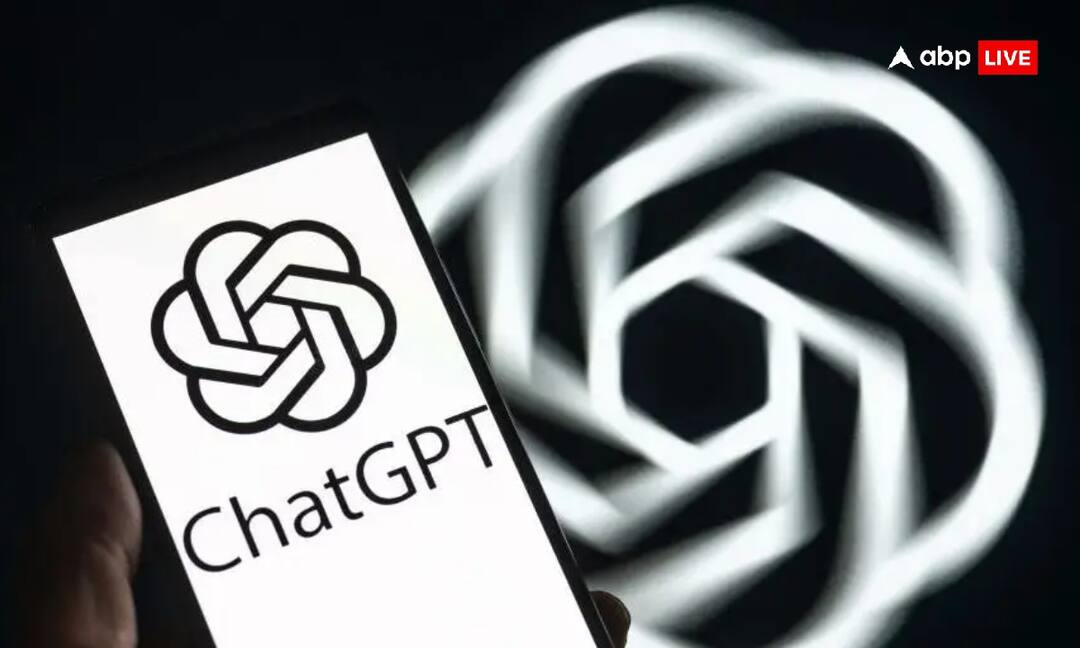- The 2026 Toyota Hilux introduces BEV, 48V hybrid, and hydrogen variants, combining electrification and advanced safety with the pickup’s long-standing durability and off-road versatility.

View Personalised Offers on
Toyota has officially taken the wraps off the ninth-generation Hilux, ushering in a new electrified era for its iconic global pickup. For the first time in its storied history, the Hilux lineup now includes a battery electric version (BEV), a 48V mild-hybrid diesel, and an upcoming hydrogen fuel cell model, expanding Toyota’s multipath approach to cleaner mobility. While the design, technology, and safety systems have evolved significantly, the new Hilux continues to embody the brand’s core values of strength, reliability, and durability, ensuring it remains as capable off-road as ever.


2026 Toyota Hilux BEV
Toyota’s first fully electric version of its long-running pickup represents the brand’s move toward electrified commercial vehicles while retaining the core toughness associated with the Hilux nameplate.
Built on the traditional body-on-frame architecture, the BEV maintains its structural strength for off-road use. Toyota engineers have taken additional measures to shield the battery pack against water ingress and underbody damage.
2026 Toyota Hilux BEV: Key specifications (Pre-homologation data)
| Specification | Details |
|---|---|
| Battery | 59.2 kWh lithium-ion |
| Drive System | Dual eAxles (front & rear) |
| Torque Output | 205 Nm (front) + 268.6 Nm (rear) |
| Combined Power | 183 bhp (estimated) |
| Drive Type | Permanent AWD |
| Range (WLTP) | ~ 240 km |
| Payload | ~715 kg |
| Towing Capacity | ~1,600 kg |
| Wading Depth | 700mm |
| Terrain Control | Multi-Terrain Select with torque and brake control |
The BEV includes Multi-Terrain Select, allowing drivers to adapt torque and braking control to different surfaces, functionally equivalent to the low-range mode (L4) of conventional versions.
Toyota also aims for fast-charging capability to reduce operational downtime, a feature expected to benefit both commercial users and fleet operators.
Also watch: Toyota Innova turns 20 in India
2026 Toyota Hilux BEV: Design and exterior
The ninth-generation Hilux has been redesigned under the “Tough and Agile” philosophy. The front fascia features slimmer LED headlamps, a central TOYOTA name bar, and a more upright stance.
The BEV variant is distinguished by a closed front grille for improved aerodynamics and specific alloy wheels. Functional updates include a rear deck step for easier cargo access and redesigned side steps on select trims.
Toyota has also simplified the lineup to a single Double Cab body style, reflecting market trends that favour dual-purpose utility and passenger space.
2026 Toyota Hilux BEV: Interior and technology
The interior of the new Hilux takes cues from the latest Land Cruiser, focusing on improved quality and functionality. The cabin layout has been reworked with a horizontal dashboard design and modern digital interfaces.

Key highlights include:
- 12.3-inch customisable driver’s display
- 12.3-inch touchscreen infotainment system (depending on trim)
- Shift-by-wire selector for the BEV variant
- Wireless charger and multiple USB ports
- MyToyota app offering remote connectivity and vehicle data access
The connected features enable fleet operators to monitor up to 10 vehicles, tracking details such as fuel level, battery charge status, trip history, and real-time location.
2026 Toyota Hilux 2.8D 48V
Alongside the BEV, Toyota has revealed the Hilux 2.8D 48V mild-hybrid variant, combining diesel power with a 48-volt electric system. Production is set to begin in spring 2026, with the setup expected to be the mainstay in several global markets.
2026 Toyota Hilux 2.8D 48V: Specifications
| Specification | Details |
|---|---|
| Engine | 2.8-litre diesel with 48V hybrid support |
| Combined Output | Approx. 201 bhp |
| Battery | 48V lithium-ion (under rear seats) |
| Payload | Up to 1,000 kg |
| Towing Capacity | Up to 3,500 kg (braked trailer) |
| Wading Depth | 700mm |
| Key Systems | Multi-Terrain Select, Multi-Terrain Monitor, Panoramic View Monitor |
The system consists of a motor-generator, DC-DC converter, and a 48V battery, improving low-speed response and overall smoothness. The motor-generator is mounted high in the engine bay, helping maintain the pickup’s 700 mm wading capability.
The electrified components are integrated without affecting the cabin or load space and are designed to withstand high-temperature and rough-terrain conditions.
2026 Toyota Hilux 2.8D 48V: Safety and assistance systems

The ninth-generation Hilux also introduces an expanded version of Toyota Safety Sense, bringing in several new features and improvements.
New systems include:
- Low-Speed Acceleration Suppression
- Proactive Driving Assist (PDA)
- Emergency Driving Stop System (EDSS)
- Blind Spot Monitor
- Safe Exit Assist
- Driver Monitor Camera
- Over-the-air (OTA) updates for system upgrades
In a first for the model, the Hilux now uses electric power steering (EPS), which enhances control accuracy and reduces steering effort. The system also helps minimise kickback during off-road driving.
Also Read : Toyota to launch 15 new models in India by 2030, sharpens rural focus
Hydrogen-powered Hilux: Future fuel for 2028
Toyota has confirmed that a Hydrogen Fuel Cell Electric Hilux (FCEV) is under development and scheduled for production in 2028. The model will utilise Toyota’s fuel cell technology already seen in the Mirai sedan, reflecting the company’s continued investment in hydrogen as part of its long-term energy roadmap.
The hydrogen Hilux aims to extend the pickup’s zero-emission capability while promoting hydrogen infrastructure and broader adoption across markets, especially in Europe.
Regional powertrain strategy
Toyota’s multipath approach means different regions will receive different versions of the new Hilux. While the BEV and 48V hybrid will dominate most markets, internal combustion engines will continue to be offered in Eastern Europe to suit local needs.
This diversification aligns with Toyota’s view that no single technology fits all markets, and a mix of powertrains remains necessary during the global transition to cleaner mobility.
Check out Upcoming Cars in India 2025, Best SUVs in India.
First Published Date: 10 Nov 2025, 16:42 pm IST


